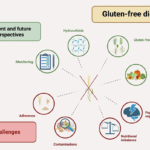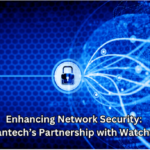In an era where digital connectivity is the backbone of global communication, innovative platforms like www gravityinternet are redefining how we interact with the internet. This article dives deep into the concept, functionality, and potential of GravityInternet.net, a groundbreaking project aiming to decentralize web infrastructure and empower users. Whether you’re a tech enthusiast, a developer, or a business leader, understanding this platform’s role in shaping the future of the internet is critical.
What Is www.gravityinternet.net?
www.gravityinternet.net (often stylized as Gravity Internet) is an emerging decentralized network designed to address the limitations of traditional internet frameworks. Unlike centralized systems controlled by tech giants, Gravity Internet leverages blockchain technology, peer-to-peer (P2P) networks, and advanced encryption to create a secure, user-centric ecosystem.
The platform’s name, “Gravity,” symbolizes its mission to pull control back to users, ensuring data sovereignty, reduced latency, and resistance to censorship. By distributing data across a global network of nodes, GravityInternet.net aims to eliminate single points of failure, making the internet more resilient and democratic.
Key Features of www gravityinternetnet
To grasp the uniqueness of this platform, let’s explore its standout features:
1. Decentralized Architecture
Traditional internet services rely on centralized servers owned by corporations, leaving user data vulnerable to breaches and misuse. GravityInternet.net replaces this model with a decentralized structure where data is stored across multiple nodes. This not only enhances security but also ensures uninterrupted access, even if parts of the network go offline.
2. Blockchain Integration
By integrating blockchain, GravityInternet.net enables transparent, tamper-proof transactions and data exchanges. Smart contracts automate processes like bandwidth sharing or content delivery, reducing reliance on intermediaries.
3. Enhanced Privacy and Security
The platform employs end-to-end encryption and zero-knowledge proofs, ensuring users’ data remains private. Unlike conventional ISPs, GravityInternet.net cannot monitor or sell user activity, aligning with growing demands for digital privacy.
4. Community-Driven Governance
Decisions about network upgrades, policies, and resource allocation are made through decentralized governance. Token holders vote on proposals, ensuring the platform evolves in line with community needs.
5. Low-Latency Connectivity
By optimizing data routing through geographically distributed nodes, GravityInternet.net reduces latency, making it ideal for real-time applications like gaming, video conferencing, and IoT devices.
The Benefits of a Decentralized Internet
The rise of platforms like GravityInternet.net signals a paradigm shift in internet infrastructure. Here’s why this matters:
1. Resistance to Censorship
Centralized platforms often comply with government censorship demands. A decentralized network like GravityInternet.net, however, makes it nearly impossible to shut down or restrict access to information, fostering free speech globally.
2. Improved Data Ownership
Users retain full control over their data. Instead of surrendering information to corporations, individuals decide how and where their data is stored and shared.
3. Cost Efficiency
By eliminating middlemen, decentralized networks reduce costs for both users and service providers. For example, content creators can distribute media directly to audiences without paying hefty platform fees.
4. Scalability for Emerging Technologies
As IoT, AI, and VR technologies grow, traditional networks struggle with bandwidth demands. GravityInternet.net’s P2P architecture scales effortlessly, supporting next-gen innovations.
Challenges Facing Decentralized Networks
While GravityInternet.net offers immense potential, decentralized systems face hurdles:
- Adoption Barriers: Transitioning from centralized services requires user education and infrastructure investment.
- Regulatory Uncertainty: Governments may resist decentralized platforms due to difficulties in monitoring illegal activities.
- Technical Complexity: Maintaining node participation and network stability demands robust incentives and user-friendly interfaces.
Addressing these challenges will determine GravityInternet.net’s long-term success.
GravityInternet.net vs. Traditional ISPs: A Comparison
| Aspect | GravityInternet.net | Traditional ISPs |
|---|---|---|
| Control | Decentralized, user-governed | Centralized, corporate-controlled |
| Privacy | End-to-end encryption | Limited, often monetized |
| Latency | Optimized via global nodes | Dependent on centralized servers |
| Censorship Resistance | High | Low |
| Cost Structure | Community-funded, lower fees | Profit-driven, variable pricing |
The Future of www gravityinternetnet
As digital privacy concerns escalate, platforms like www GravityInternet are poised to disrupt the status quo. Potential future developments include:
- Integration with Web3: Collaborating with decentralized apps (dApps) and crypto ecosystems to create a seamless Web3 experience.
- 5G and Edge Computing Synergy: Leveraging edge computing to further reduce latency and support IoT ecosystems.
- Global Digital Inclusion: Expanding access to underserved regions by lowering infrastructure costs.
Conclusion
www gravityinternetnet represents a bold step toward a more equitable and secure internet. By decentralizing control, prioritizing privacy, and empowering users, this platform challenges the dominance of tech monopolies and paves the way for a freer digital future. While obstacles remain, the potential benefits—from enhanced security to global connectivity—make GravityInternet.net a project worth watching.
As the internet continues to evolve, embracing decentralized solutions will be key to preserving its original promise: an open, accessible, and democratic space for all.










